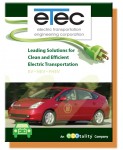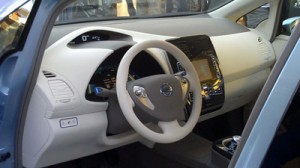Tesla has released the video below of the “Alpha Phase Model S Car,” with this accompanying text:
Model S, engineered from the ground up as an EV, is meticulously designed for superior aerodynamics, stability and handling, crash safety, performance and range. Before Model S enters production it will have been thoroughly tested using both computer simulations and test vehicles. Tesla will complete two vehicle testing phases, Alpha and Beta. The Alpha phase began in 2010.
Buyers will be able to choose between three range-variable batteries: 160 miles, 230 miles and 300 miles per charge. Test driving the Tesla Roadster 2.0 in December was a thrill. Granted, any car that can accelerate from 0-60 mph in under four seconds easily passes the ‘awesome’ test. (Disneyland’s ‘California Screamin’ roller coaster has the greatest acceleration I had experienced before the Tesla: advertised at 0-55 mph in four seconds.) But the roadster was thrilling in countless other ways, from the aesthetic to the high-tech — to the fact that it’s a 100% electric vehicle.
The S car will have all these features and it will hold seven passengers (five adults and an additional two children in jump seats). Compare that to the Volt’s little-talked about limited capacity: According to GM, the gas-electric hybrid will carry just four passengers. The Volt’s gas tank is suppose to address “range anxiety,” but once potential drivers get a closer look, they may be hit with “limited seating syndrome.” The Nissan Leaf, by comparison, seats five, which is pretty much standard for a family car.
Until GM makes a five-passenger version of the Volt available, I don’t see it gaining the kind of acceptance the company is counting on.




